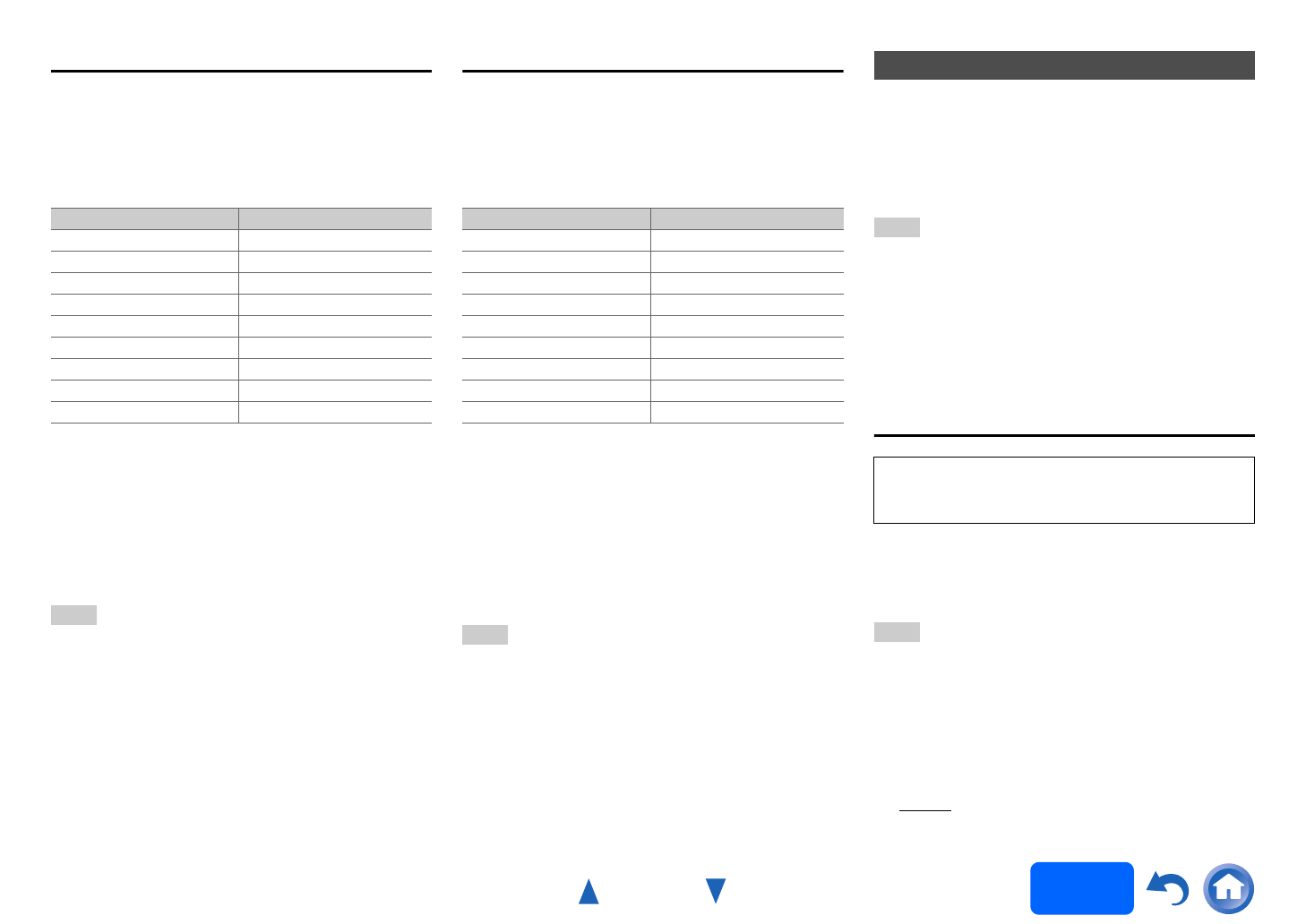
Advanced Operations
En-63
Operating
procedure
(➔ page 60)
Component Video Input
If you connect a video component to a component
video input, you must assign that input to an input
selector. For example, if you connect your Blu-ray
Disc/DVD player to COMPONENT VIDEO IN 2, you
must assign “IN2” to the “BD/DVD” input selector.
Here are the default assignments.
■ BD/DVD, CBL/SAT, STB/DVR, GAME1, GAME2,
PC, AUX, TV/CD, PHONO
`IN1, IN2:
Select the input to which the component has
been connected.
`-----:
Output composite video sources from the HDMI
output.
Note
• When composite video and component video sources are
upconverted for HDMI OUT SUB, only signals with a
resolution of 480i/576i are output and the resolution
remains the same. If your TV doesn’t support this
resolution, there will be no picture (➔ page 98).
Digital Audio Input
If you connect a component to a digital audio input,
you must assign that input to an input selector. For
example, if you connect your CD player to the
OPTICAL IN 1, you must assign “OPTICAL1” to the
“TV/CD” input selector.
Here are the default assignments.
■ BD/DVD, CBL/SAT, STB/DVR, GAME1, GAME2,
PC, AUX, TV/CD, PHONO
`COAXIAL1, COAXIAL2, COAXIAL3, OPTICAL1,
OPTICAL2:
Select the input to which the component has
been connected.
`-----:
Select if the component is connected to an
analog audio input.
Note
• When an HDMI IN is assigned to an input selector in
“HDMI Input” (➔ page 62), the same HDMI IN will be set
as a priority in this assignment. In this case, if you want to
use the coaxial or optical audio input, make the appropriate
selection in the “Audio Selector” (➔ page 72).
• Supported sampling rates for PCM signals (stereo/mono)
from a digital input (optical and coaxial) are
32/44.1/48/88.2/96 kHz/16, 20, 24 bit.
Here you can check the settings made by
Audyssey MultEQ
®
Room Correction and Speaker
Setup function, or set them manually, which is useful
if you change one of the connected speakers after
using Audyssey MultEQ Room Correction and
Speaker Setup function (➔ page 27).
Note
• These settings are not available in either of the following
cases:
–a pair of headphones is connected.
–The “Audio TV Out (Main)” setting is set to “On”
(➔ page 75) or “Audio TV Out (Sub)” setting is set to
“On” (➔ page 75) and you’re listening through your TV
speakers.
–“HDMI CEC (RIHD)” is set to “On” (➔ page 74) and
you’re listening through your TV speakers.
Speaker Settings
If you bi-amp the front speakers, you must change the
“Speakers Type(Front)” setting. For details on
speaker wire connection, see “Bi-amping the Front
Speakers” (➔ page 17).
Note
• When bi-amping is used, the AV receiver is able to drive up
to 5.1 speakers in the main room.
• Before you change these settings, turn down the volume.
■ Speaker Impedance
`4ohms:
Select if the impedance of any speaker is
4 ohms or more but less than 6.
`6ohms
:
Select if the impedances of all speakers are
between 6 and 16 ohms.
Input selector Default assignment
BD/DVD IN1
CBL/SAT IN2
STB/DVR -----
GAME1 -----
GAME2 -----
PC -----
AUX -----
TV/CD -----
PHONO -----
Input selector Default assignment
BD/DVD COAXIAL1
CBL/SAT COAXIAL2
STB/DVR COAXIAL3
GAME1 OPTICAL1
GAME2 -----
PC -----
AUX -----
TV/CD OPTICAL2
PHONO -----
2. Speaker Setup
If you change these settings, you must run
Audyssey MultEQ Room Correction and Speaker
Setup again (➔ page 27).


















